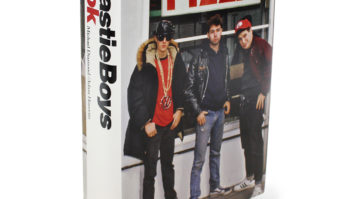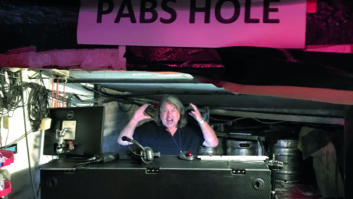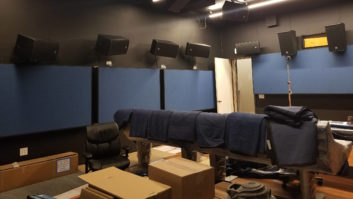I interviewed the Beastie Boys in 1992—one of my first assignments as a budding young writer. It was a complete disaster.

The Boys were promoting what is now considered their comeback disc, Check Your Head, and while I only spoke to them over the phone, by the end of the interview, I felt like I’d been batted around their office like a volleyball. I got started with “So how are you guys doing today?” which was greeted with an impatient “Step it up, step it up, MAN! Let’s GO!”
Before I knew it, they were tearing into verbal flights of fancy about how they’d bought their lyrics underground by bartering Chinese food for Arabian princesses who were traded for, I don’t know—dump trucks or something. The conversation only got weirder and my questions became completely besides the point…when they were even acknowledged. Instead, the Boys barreled along, competing to crack each other up, piling in-joke upon in-joke while I sat on the other end of the phone, steamrolled and stupefied.
When it was all over, I hung up the phone and rolled my eyes—the interview was completely useless; what would I do? The real panic set in a moment later, however, when I discovered that I’d made the classic Rookie mistake: I hadn’t plugged the phone into my tape recorder; all I had was 20 minutes of me going “uh-huh…really…wow.”
Panicked, I typed up as much as I could remember while it was all fresh in my mind, and I fudged my way through the article, but one moment that still sticks with me today was the brief pause of sanity after I asked, “The album seems to have a theme of self-reliance—was that intentional?” They actually paused and gave this some serious consideration, before one said thoughtfully, “Could be. We definitely had to learn that after the last record.”

That “last record” was their true masterpiece, Paul’s Boutique, which got the 20th anniversary, 24-bit remastering treatment from Capitol a few years ago, re-released on CD, all flavors of digital downloads, and even old-fashioned vinyl, complete with the original eight-flap fold-out cover alá Yes. While that kind of fuss is made over important albums all the time today, in the late Eighties, it was impossible to think that the dud follow-up to their lunkheaded debut, Licensed To Ill, would ever be considered a classic.
A bomb when it landed, Paul’s Boutique was critically lauded and commercially ignored. The music press praised it as “The Sgt. Pepper of rap,” although, with the eight-song closing suite, “B-Boy Bouillabaisse,” it was more akin to Abbey Road. Even so, many of the trio’s fans hated the ambitious album; they just wanted more anthems to swill beer to. All this consigned the errant collection to become the sleeper of Eighties hip-hop; in the two decades since its release, Paul’s Boutique has quietly sold over 2 million copies.
Remastering is perfect for such a record however, as the album has always been one that required—nay, demanded—attentive listening. Issued just before sample licensing became the rule rather than the exception, the album is still stunning today for its musical density, weaving together 105 (uncredited) samples and sounds to create its music, presaging the arrival of the mashup by 15 years.
To listen to it while remembering that it was recorded in the Dust Brothers’ home studio before the advent of Pro Tools is to have your mind blown. “The Sounds of Science” alone threads Pato Banton, Isaac Hayes, Boogie Down Productions, James Brown and five separate Beatles songs together through the use of tape loops and nascent, early samplers. It was hard work to create such audio collages on tape without the help of modern computer technology; back then, “Cut and Paste” was something you did in Nursery school. Later tracks on the album include everyone from the P-Funk All Stars to Led Zeppelin to The Crusaders. The breadth of material invoked is impressive, and between its musical depth and the technical acuity on display, the album launched the Dust Brothers’ production career, which hit its zenith with Beck’s Odelay a few years later.

Now an entire cottage industry of fandom has grown around the album. On the web, fans endlessly dissect, twist and debate the album, identifying the most obscure of audio snippets and their origins, explaining the in-jokes and more. There’s even an entire book in Continuum’s popular 33 1/3 series devoted to the album, and it’s a good read. The fervor that has developed for Paul’s Boutique over the last two decades is moderately surprising, but it shouldn’t be—complex works that resonate through the years often become their own microcosoms of interplay between a static work and new generations of fans. If you need another example, there’s no need to look far—consider the worshipful cult that obsesses over another classic album by another group of Boys on Capitol: Pet Sounds by The Beach Boys.







